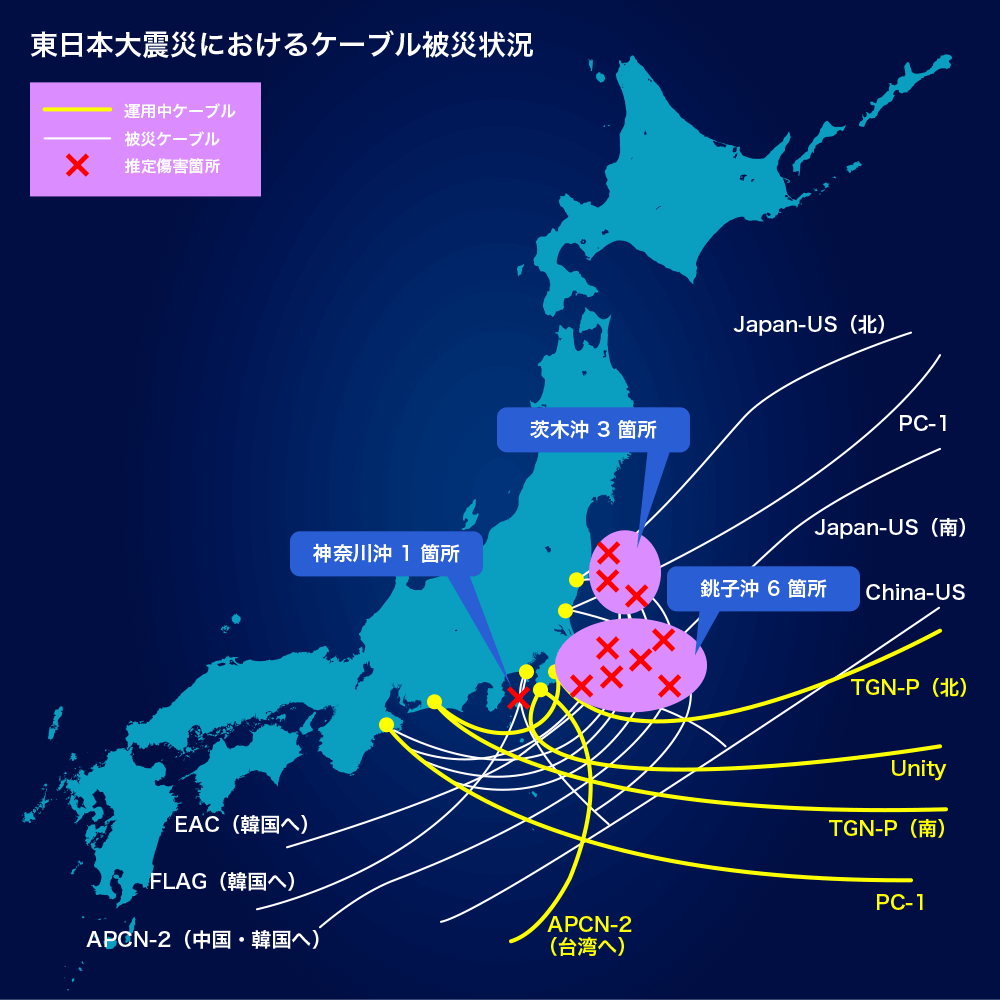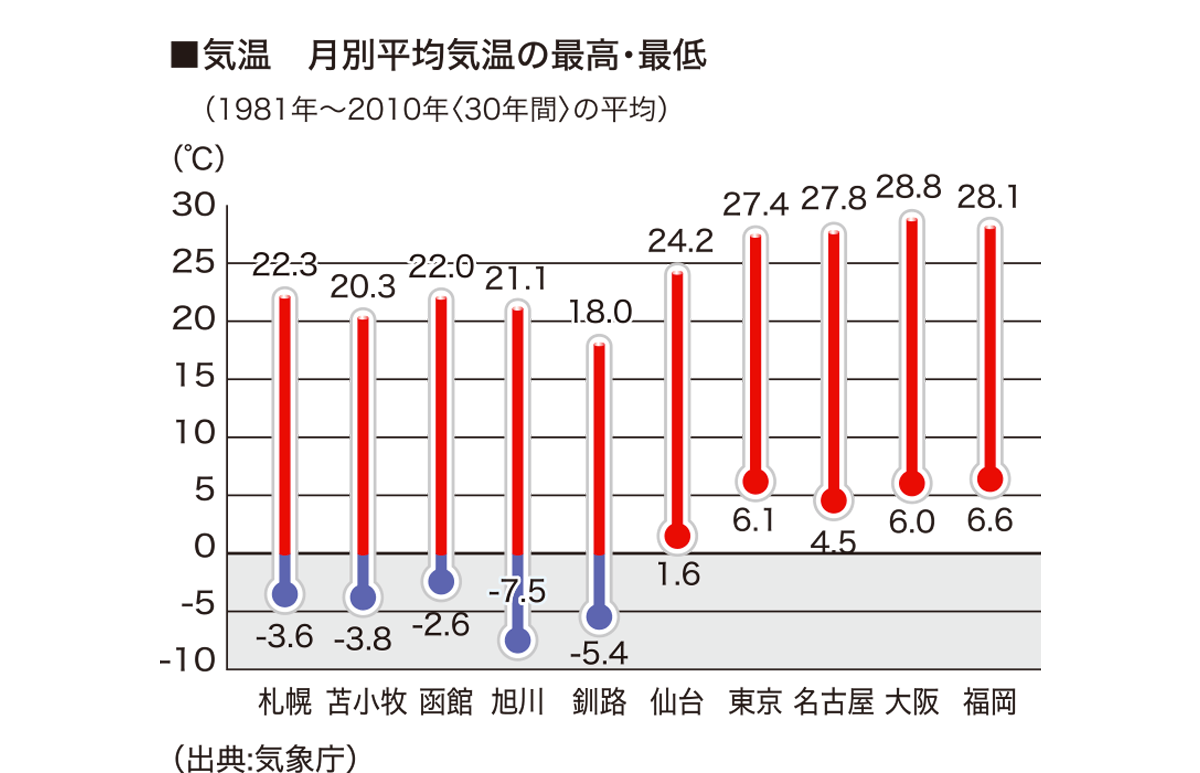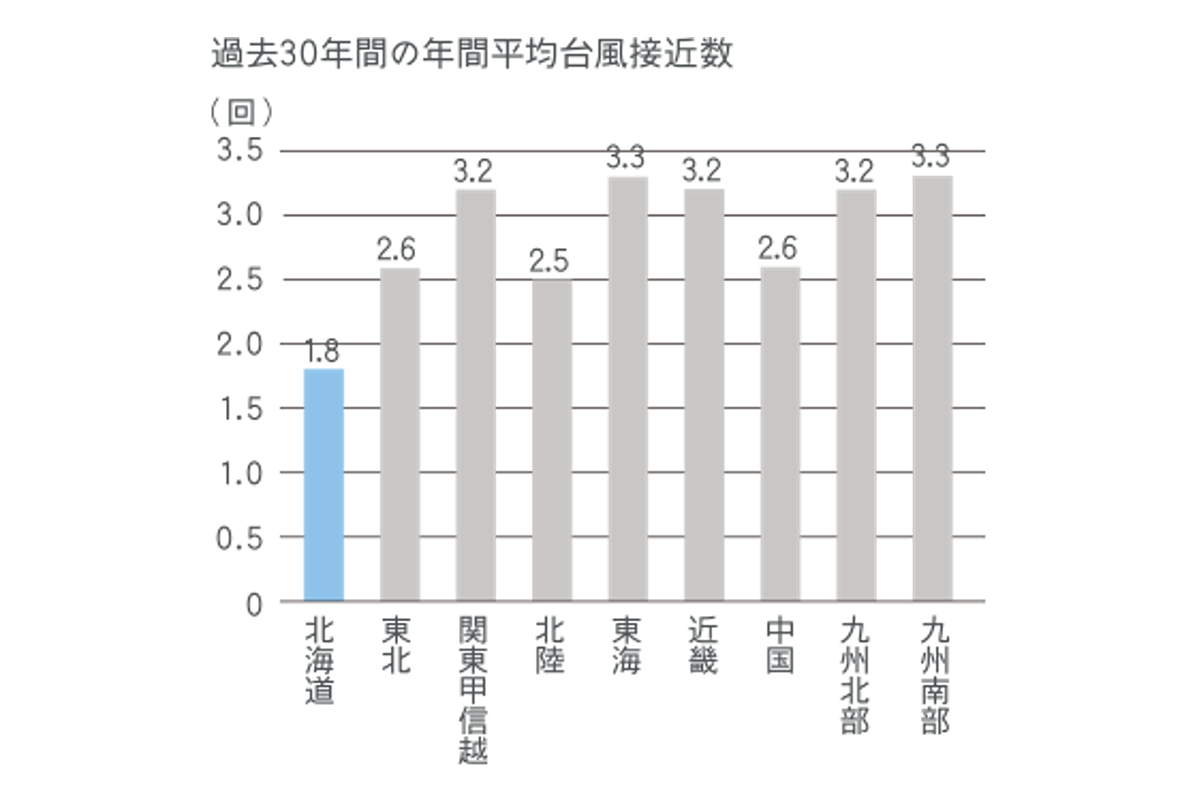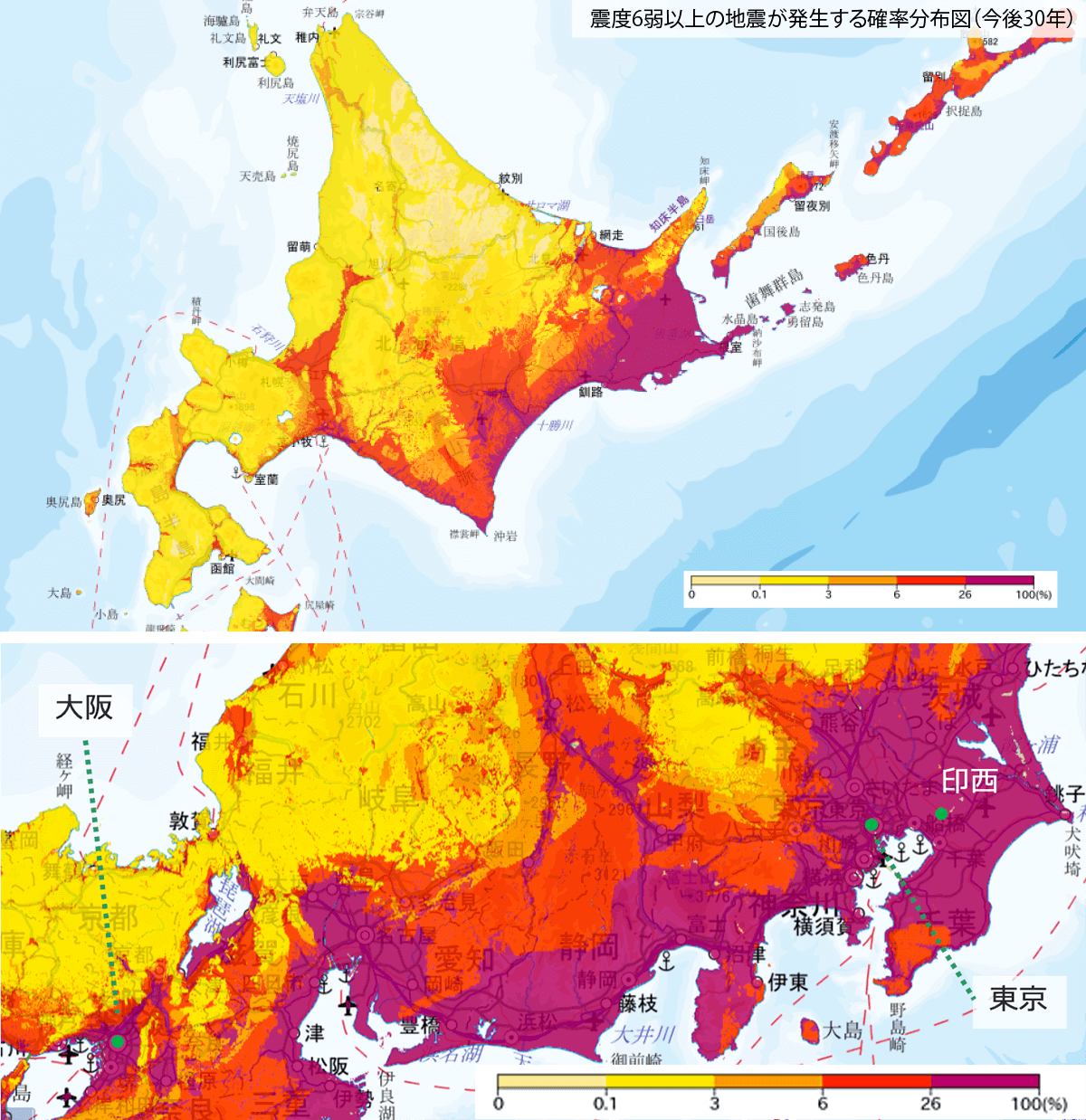Disaster hazard
Natural Disasters and Hazards of Hokkaido
The Ideal Location for Economic Security and Domestic Data Resilience
Each time Japan is struck by a natural disaster, a spotlight is shone on the problem with the country’s infrastructure being centered on Tokyo.
About 80% of data center operators in Japan are centered in metropolitan areas such as Tokyo and Osaka. If such a city were to be severely damaged by a natural disaster like an earthquake or flood, Japan’s economy and way of life would also be severely damaged. This would have a significant effect those living in Hokkaido as well.
Today, economic activities are growing more and more dependent on telecommunications. The accumulation of data center operators in metropolitan areas is a problem that urgently needs to be addressed. As Hokkaido has a low risk of natural disasters, data centers can be run safely and stably. Therefore, to achieve the goal of strengthening digital infrastructure, as well as to improve the nation’s resilience to natural disasters, there is an increasing need for the data center industry to be built up in Hokkaido.

Weather and Risk of Natural Disasters
Hokkaido is in the subarctic zone, making it 7 to 10 degrees cooler than the mainland, which is in the temperate zone, throughout the year. This includes cities with a large number of data centers such as Tokyo and Osaka.
Thus, the power consumption of cooling equipment that directly or indirectly uses outdoor air can be greatly reduced.
Typhoons bringing heavy rain do not often reach Hokkaido, and even more rarely make landfall. Even when they do approach, they typically lose power and turn into extratropical cyclones, resulting in far less lightning compared to the mainland.
Measures to protect Hokkaido’s power supply and telecommunications networks from snow have been put in place, including snow protection for transmissions towers and utility poles and snow removal for street networks.
-
Comparison of average temperatures

-
Frequency of typhoon approach

-
Frequency of lightning

Earthquakes
Following the Great East Japan Earthquake occurring on March 11, 2011, Japan is said to have entered a period of heightened seismic activity. Japan has been hit by major earthquakes many times in the past. In particular, the risk of earthquakes on the Pacific Ocean coast, such as Greater Tokyo Area earthquakes and Tonankai earthquakes, is increasing. Countermeasures are needed to protect major economic zones from large earthquakes, especially areas with a large concentration of data centers.Having learned from the Hokkaido Eastern Iburi Earthquake which occurred on September 6, 2018, Hokkaido has built an energy infrastructure resistant against natural disasters, advancing its power supply systems and routes, as well as maintaining and expanding its power generation facilities.
Taking the risk of a major earthquake in areas such as the Chishima Trench and Japan Trench, we are capable of providing data center candidate sites in Hokkaido with lower risk of and reduced impact from earthquakes.
 Source:J-SHIS | Japan Seismic Hazard Information Station
Source:J-SHIS | Japan Seismic Hazard Information Station
Contact
-
Contact by Phone
Hokkaido Economic Affairs Bureau Industrial Promotion Division Location Promotion Section
011-204-5328(Japanese only)
-
Contact via Form

